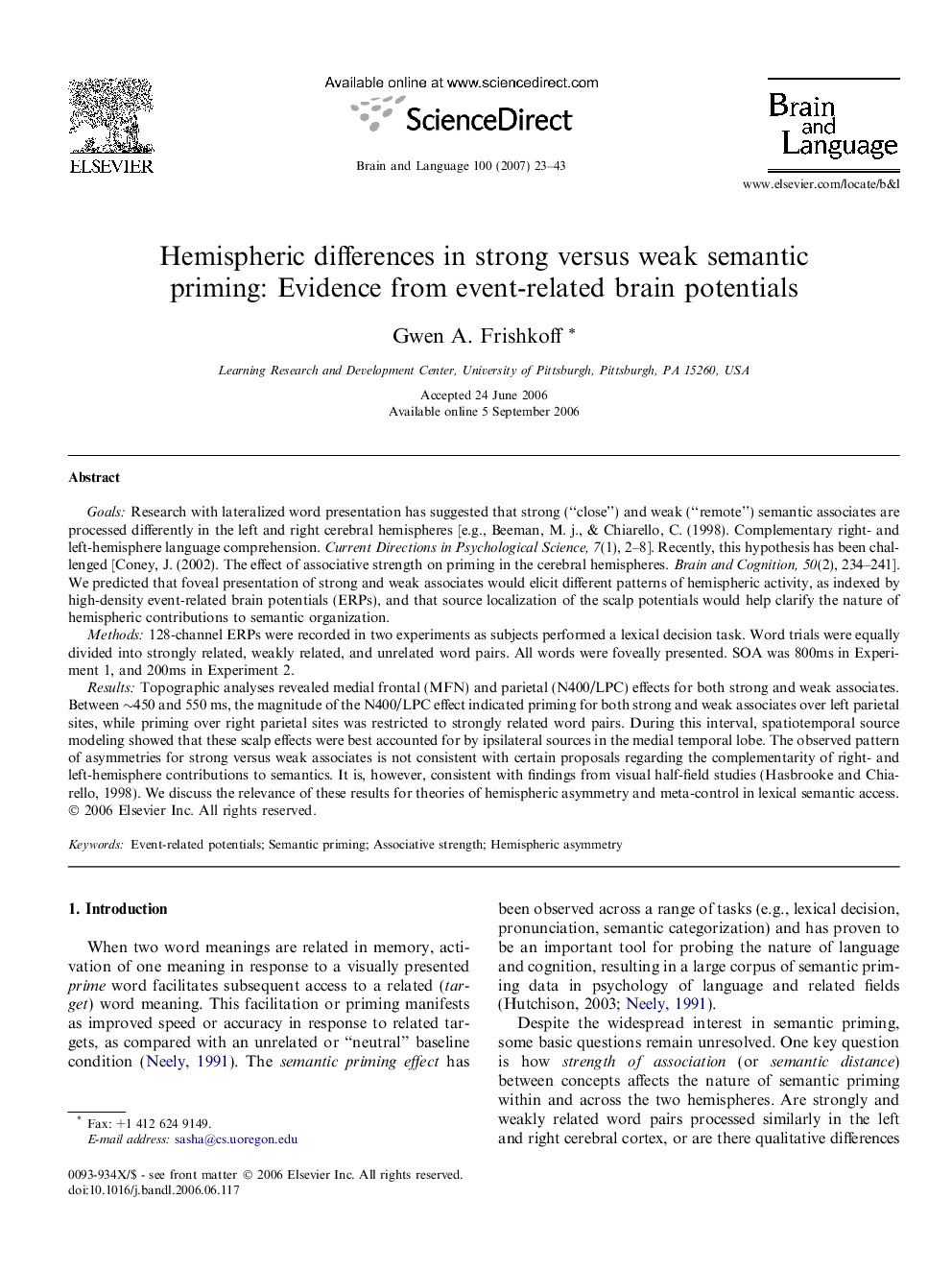| کد مقاله | کد نشریه | سال انتشار | مقاله انگلیسی | نسخه تمام متن |
|---|---|---|---|---|
| 926142 | 921564 | 2007 | 21 صفحه PDF | دانلود رایگان |

GoalsResearch with lateralized word presentation has suggested that strong (“close”) and weak (“remote”) semantic associates are processed differently in the left and right cerebral hemispheres [e.g., Beeman, M. j., & Chiarello, C. (1998). Complementary right- and left-hemisphere language comprehension. Current Directions in Psychological Science, 7(1), 2–8]. Recently, this hypothesis has been challenged [Coney, J. (2002). The effect of associative strength on priming in the cerebral hemispheres. Brain and Cognition, 50(2), 234–241]. We predicted that foveal presentation of strong and weak associates would elicit different patterns of hemispheric activity, as indexed by high-density event-related brain potentials (ERPs), and that source localization of the scalp potentials would help clarify the nature of hemispheric contributions to semantic organization.Methods128-channel ERPs were recorded in two experiments as subjects performed a lexical decision task. Word trials were equally divided into strongly related, weakly related, and unrelated word pairs. All words were foveally presented. SOA was 800ms in Experiment 1, and 200ms in Experiment 2.ResultsTopographic analyses revealed medial frontal (MFN) and parietal (N400/LPC) effects for both strong and weak associates. Between ∼450 and 550 ms, the magnitude of the N400/LPC effect indicated priming for both strong and weak associates over left parietal sites, while priming over right parietal sites was restricted to strongly related word pairs. During this interval, spatiotemporal source modeling showed that these scalp effects were best accounted for by ipsilateral sources in the medial temporal lobe. The observed pattern of asymmetries for strong versus weak associates is not consistent with certain proposals regarding the complementarity of right- and left-hemisphere contributions to semantics. It is, however, consistent with findings from visual half-field studies (Hasbrooke and Chiarello, 1998). We discuss the relevance of these results for theories of hemispheric asymmetry and meta-control in lexical semantic access.
Journal: Brain and Language - Volume 100, Issue 1, January 2007, Pages 23–43